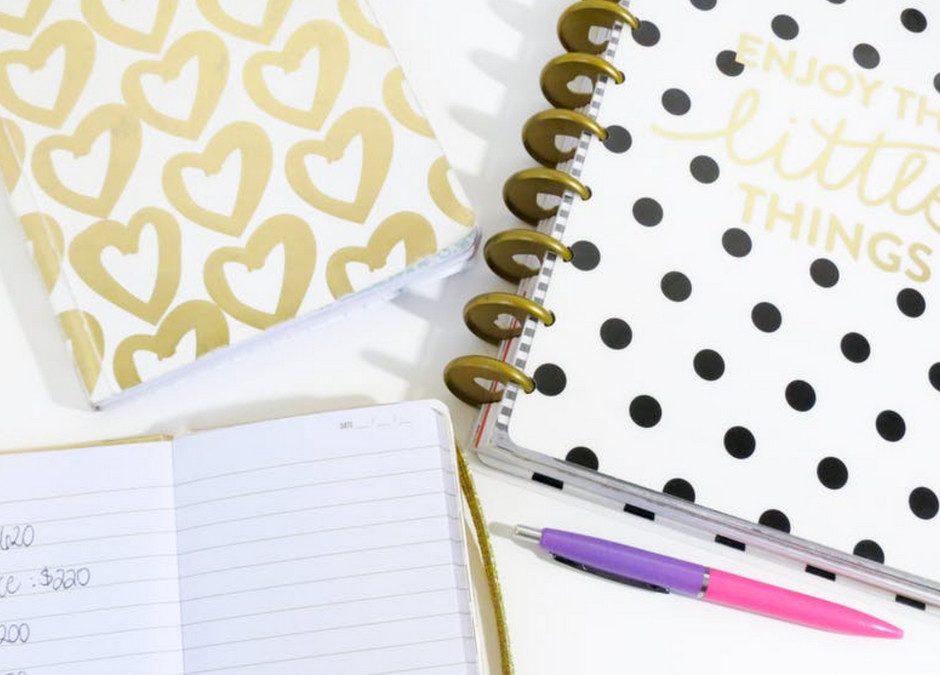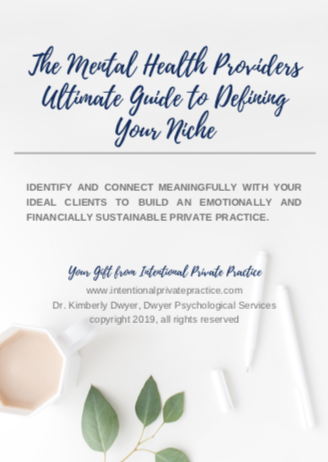Overwhelmed much? This year has been a doozy but I hope you’re sliding into the final stretch with a good handle on your business, your self-care strategies in tact, and beginning to plan for next year with optimism and joy. My ticket to managing 2020’s overwhelm has been staying on top of my practice organization and using my organization tools with consistency. My top 3 faves are my planner, my to do list, and my ideas and inspiration notebook. Mine are mostly paper, but you can augment with your favorite software applications, and I’ll show you how to integrate all of this for a well-oiled organization machine.
Planner
My planner is my externalized working memory. If something needs to happen, it goes in the planner. Like many of you, my life (personal and professional) is just too saturated right now to hold everything in my brain. I use a paper planner after too many years of various software programs not playing well together–it only took a couple mess ups with my time for me to realize that “one ring to rule them all” is the mantra for my planner, and for me, that’s a spiral bound paper planner with plenty of room for jotting appointments, notes, and goals for the week. However, software integration has gotten much better and if you have a digital planner that works great for you and communicates with your practice management software, go for it. All of my appointments go in my planner, and I also set personal goals in the margins (like “exercise 4 times this week” or “work on my book at least 90 minutes this week”).
My process for client appointments has become routinized and accounts for both paper and planner. When I set an appointment, I do so by looking at my paper planner (the one ring strategy). My “finish an appointment” routine is to finish my note, lock the note, charge for the appointment if applicable, and then enter the new appointment into my practice software. That way clients will get reminder emails or texts, if they’ve opted into those. By making the “wrap up” portion of my appointments as routinized as possible, these appointments almost always make it to my paper and practice calendars. To err on the side of caution, one of my “wrap up the week” activities is to reconcile my paper planner to my practice planner for the following week and make sure all appointments are entered and accurate.
In the market for a paper planner? What you choose will depend on how you plan to use it. For many years, I used a very small paper planner (4 x 5,5″ or so) that fit easily in my purse. I found over time that I preferred a little extra space to jot notes and set weekly goals. My planner for 2020 is about 5 x 7″ and is a great size to allow for extra planning space. For 2021, I purchased a gorgeous but significantly larger (about 8 x 10″) Erin Condren spiral planner with a hard laminated cover, internal pockets, and additional integrated planning pages for each month. I’m super excited to start using it! Given that I don’t see a lot of mobility in my worklife this year with ongoing pandemic issues and telehealth, I’m not as concerned about a larger planner being bulky to tote back and forth from work.
To Do List
Is your to do list a series of scraps of paper: post it notes, random index cards, and backs of receipts? Mine was, too. It works in a pinch but makes it really hard to track (half the time I can’t even decipher what my note says or references, and I have no idea how recent the stacks of to do notes are that I’d find on my desk). I love a good to do list. I know some of you are cringing at that, but hear me out. Getting action items on paper and breaking down long term goals into measurable steps is what allows me to see and plan out progress.
Some planners have built in to do lists, which are great, but may offer a limited amount of space. I just purchased a legal size printed “to do” paper pad. Date goes along the top and then there are 31 lines with check boxes to plan out as many things as you’d like to accomplish. You could use a to do planner like this as a daily item, or you could plan out steps for a long term goal and set due dates for each item. Keeping this on a bound planner also allows you to reference earlier items completed and track your progress.
If you prefer a digital to do list, I would suggest trying out trello. I use trello to track just about everything I do in my work life. A super simple “to do” board in trello could have lists for to do, doing, and done. Items go on cards, and cards move through the lists as you make progress. The beauty of a trello card is that it is infinitely deep with space–you can upload files, link to webpages, add photos, etc–anything you need to get a task done. My paper list is a much reduced and more actionable list than my trello “weekly to do” list, and includes both personal and work items, though there’s no reason you couldn’t do all of this in trello.
Want more trello but not sure where to start? Check out my course which comes with my five top practice management boards included!
Ideas and Inspiration Notebook
You’re welcome to call this whatever you like, but I think it is essential for a creative entrepreneur to keep a notebook handy where ideas and inspiration go to live and be referenced. Yes, you can jot ideas in a planner, but make sure they move into something more permanent, where you’ll know to find them and nurture them. Creative people often have so many ideas but are limited in terms of time for implementation. Harnessing these ideas and designating a place for them gives space for that energy to grow when you are ready to return. I tend to purchase a new notebook when school supplies are on sale each year (late summer-ish). In this notebook I put brand new ideas, more involved planning for current ideas and projects, and notes from courses I take, articles I read, and my own business coaching. While I prefer a regular size, wide ruled notebook with a spiral binding and a heavier laminated cover, I’ve used smaller “journal” style notebooks with a glued binding in the past. Find something that works for you and that you love so you’ll be inspired to revisit it often.
Could you do this digitally? Of course. A trello board for ideas and inspiration would be a great thing to make. You could create a list for each idea, then drop cards on it as you flush out the idea. Or you could create an ideas and inspo board and then lists by the year, with cards for each idea and then activity within the card as you flush them out. A spreadsheet or doc would also work, just make sure it’s something you revisit frequently and don’t forget how to access (sheepishly looking away as I realize how many docs I’ve created and lost before I discovered trello and realized I could link to my docs and spreadsheets…).
A final note for paper people… pens and pencils
I get almost as excited about my planner as I do about my writing utensils. For me, that’s a mechanical pencil for my planner so that I can easily erase, but I also like the pilot frixion pens (eraseable, and they really do erase). The pens are also great if you like to color code in your planner. I love me a good gel pen and have several that are like writing with butter. They always inspire me to write in my best penmanship (read: legibly). I’m not kidding. My husband once went grocery shoping with my list and had to call me to ask why I wrote “flamingos” in the produce section. Tomatoes, of course, tomatoes, who puts flamingos on tacos? Penmanship may not be my strong suit, but fortunately I make up for it in spades with my organization skills!
If you’re a paper and pen/pencil person, you might like this data: handwriting has been shown to lead to greater retention of material than typing the same material on a device. Think about it. The process of formulating a thought, moving that into words, sending motor signals to your fingers to produce the letters of those words, and visually monitoring your production for accuracy on paper is a little more complex than typing, so it makes sense that this would result in richer neural encoding.
What works for you to get organized and keep your practice running smoothly? What tools do you have lined up and ready to go for 2021? What gorgeous pen gets you excited to write? Get in on the discussion in the FaceBook group!
Need Stuff?
Here are some tools similar to the ones I use and describe in this article (affiliate links follow).


